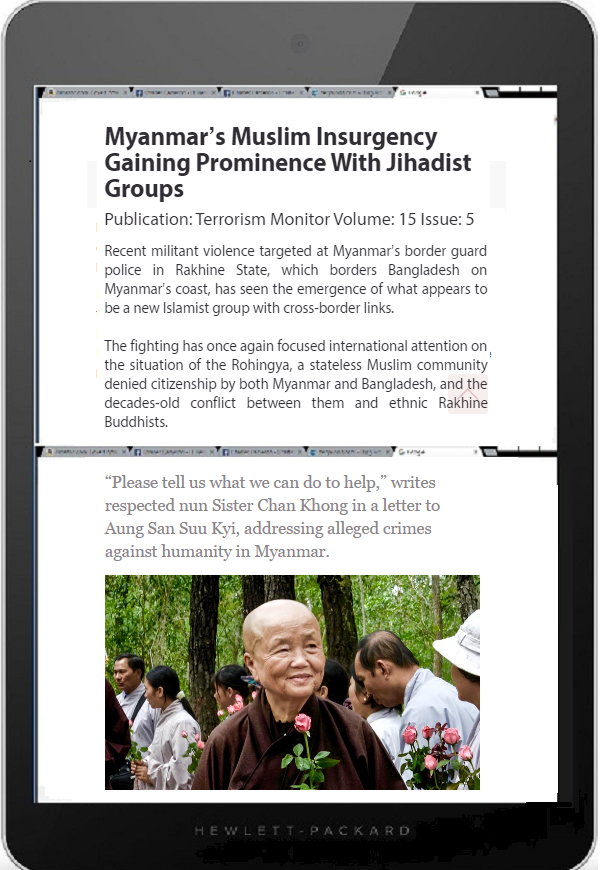Pincers on Aung San Suu Kyi
[ by Charles Cameron — is her non-intervening stance now squeezed between Islamist warriors and peaceable Buddhists? ]
.
**
Aung San Suu Kyi has been mute on the persecution of Rohingya Muslims in Rakhine State, Myanmar, see eg A new wave of atrocities is being committed against Muslims in Burma’s Rakhine state, but I imagine the pressure on her is growing — not just from the military or the bulk of the Buddhist population and many monks — but on the one hand from iolent Islamist jihadists and on the other from peaceable Buddhists elsewhere — exemplified here by Thich Nhat Hanh‘s close disciple Chan Khong..
Peaceable Buddhists — what other kind should there, could there be?
**
Sources:
Jamestown, Myanmar’s Muslim Insurgency Gaining Prominence With Jihadist Groups Lion’s Roar, Sister Chan Khong implores Aung San Suu Kyi to accept help





March 15th, 2017 at 11:33 pm
Thich Nhat Hanh…a modern day prophet. A truly amazing man with truly an enlightened view of the world.
.
“When you know how to fly, you don’t need a street map.”
TNH
.
Thanks for the post…!
.
Jim
March 16th, 2017 at 2:26 am
The Buddhist Monks of Japan, the Sohei, were anything but peaceful and adding Zen into the mix added gasoline to the fire. The monasteries fielded their own armies of monks (many of whom were samurai “resting” from the cares of the world for a time) for around 700 years until the Tokugawa Shoguns enforced peace
March 16th, 2017 at 6:11 am
Indeed, Zen. Brian Daizen Victoria’s Zen at War had quite an impact making that point re World War II, resulting in this and other apologies:
March 16th, 2017 at 2:14 pm
Violence with “the stick” often played a prominent role in the initiation and training at Japanese Zen monasteries
http://tinyurl.com/jhtm7tk
March 16th, 2017 at 3:36 pm
Rinzai Zen?
March 16th, 2017 at 4:06 pm
From Wiki:
Van de Wetering studied zen at Daitoku-ji in Kyoto, a Rinzai monastery that makes (or made, when I visited for a couple of hours in the early 70s) something of a specialty of training Westerners.
March 16th, 2017 at 6:18 pm
I first learned about the stick from reading DT Suzuki and Alan Watts. I understand now it’s considered a voluntary prompt, but they had some vivid descriptions from history of its enthusiastic overuse.